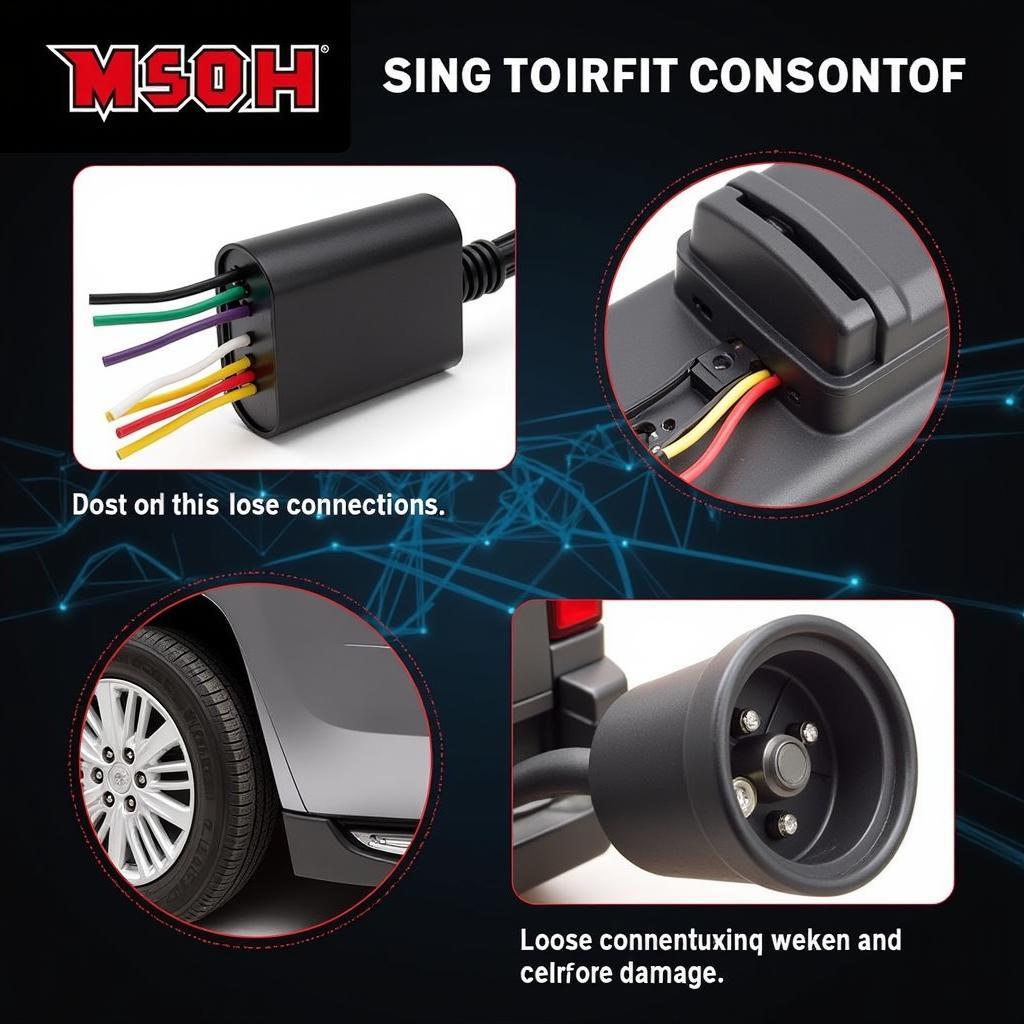The dreaded brake pad warning light on your Audi Q5 can be a source of anxiety. Understanding what triggers this light, how to diagnose the problem, and the potential solutions can save you time, money, and unnecessary stress. This guide will walk you through everything you need to know about the Audi Q5 brake pad warning light.
What Triggers the Audi Q5 Brake Pad Warning Light?
The most common reason for the brake pad warning light to illuminate is worn brake pads. Your Audi Q5 is equipped with sensors that monitor the thickness of your brake pads. When the pads wear down to a certain point, the sensor triggers the warning light. However, there can be other less common culprits, such as a faulty sensor, damaged wiring, or issues with the brake fluid level. Diagnosing the exact cause is crucial for effective repair.
Diagnosing the Problem: Beyond Worn Brake Pads
While worn brake pads are the most frequent cause, it’s essential to rule out other potential issues. Begin by checking your brake fluid level. Low brake fluid can also trigger the warning light. If the fluid level is adequate, the next step is to inspect the brake pad wear sensors. These sensors are small wires embedded within the brake pad material. If the sensor is damaged or disconnected, it can trigger the warning light even if the brake pads are still in good condition. Similarly, damaged wiring connecting the sensor to the car’s electrical system can also be the issue. A more advanced diagnostic approach involves using a diagnostic scanner to read the car’s fault codes. This can pinpoint the specific area causing the warning light.
How to Reset the Audi Q5 Brake Pad Warning Light
Once you’ve addressed the underlying issue causing the warning light, you’ll need to reset it. In some cases, the light may reset automatically after the repair. However, in other instances, you may need to manually reset it using a diagnostic scanner. Some Audi Q5 models may allow for a manual reset procedure through a combination of button presses on the dashboard, though this is less common. Refer to your owner’s manual for model-specific instructions.
Why Ignoring the Warning Light Can Be Costly
Ignoring the brake pad warning light can lead to more significant and expensive problems. Continuing to drive with severely worn brake pads can damage the brake rotors, calipers, and other components of the braking system. This can lead to costly repairs and potentially compromise your safety. Promptly addressing the warning light ensures your Audi Q5’s braking system remains in optimal condition.
Preventing Future Brake Pad Warning Light Issues
Regular brake inspections are crucial for preventing future issues. Consult your owner’s manual for the recommended brake inspection intervals for your specific Audi Q5 model. Maintaining proper brake fluid levels and addressing any brake-related concerns promptly can also help extend the life of your brake pads and prevent premature wear. Similar to signs that your car battery is going bad, recognizing the early signs of brake pad wear can help you avoid more serious problems down the line.
Professional vs. DIY Brake Pad Replacement
While some car owners may choose to replace their brake pads themselves, it’s generally recommended to have this service performed by a qualified mechanic, especially if you’re not familiar with automotive repair. Brake systems are critical safety components, and improper installation can have serious consequences. A professional mechanic has the expertise, tools, and experience to ensure the job is done correctly. This is especially true if you are experiencing issues like your car battery is good but keeps dying, which may indicate a larger electrical problem. Diagnosing and fixing brake issues often requires specialized equipment and knowledge. Just as with a car battery not starting in cold weather or understanding the difference between an alternator vs battery failure, professional diagnosis can save you time and potential headaches. If your car is making a clicking noise and wont start, it’s best to seek professional help.
Conclusion
The Audi Q5 brake pad warning light is a crucial safety feature. Understanding what causes this light to illuminate and addressing the underlying issue promptly can prevent costly repairs and ensure your safety on the road. Don’t ignore the warning light. Take action to keep your Audi Q5’s braking system in top condition.
FAQ:
-
What does the Audi Q5 brake pad warning light look like? It typically looks like a circle with parentheses on either side and an exclamation point in the center.
-
Can I drive with the brake pad warning light on? It’s not recommended. Driving with worn brake pads can damage other brake components and compromise your safety.
-
How much does it cost to replace brake pads on an Audi Q5? The cost varies depending on the location, type of brake pads, and labor rates.
-
How often should I have my Audi Q5’s brakes inspected? Consult your owner’s manual for the recommended brake inspection intervals.
-
How long do Audi Q5 brake pads typically last? Brake pad lifespan depends on driving habits and conditions. They typically last between 30,000 and 70,000 miles.
-
Can low brake fluid cause the brake pad warning light to come on? Yes, low brake fluid can trigger the warning light.
-
What should I do if the warning light stays on after replacing the brake pads? The light may need to be manually reset using a diagnostic scanner or a specific procedure outlined in your owner’s manual.

